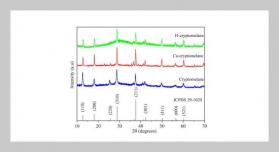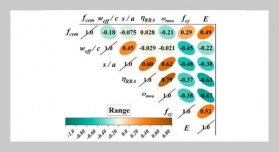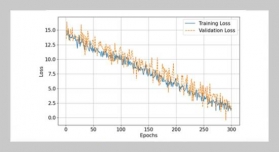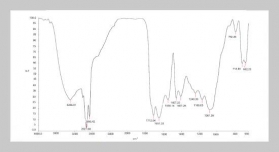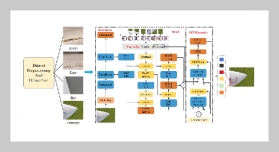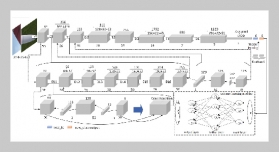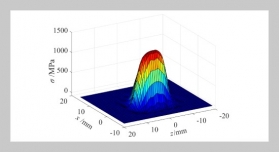Elia Nabil1, Fikry Ghobrial2, and Mahmoud Roushdi3
1Environment and Climate changes Research Institute, National Water Research Center, Egypt, (ORCID: 0000-0001-6998-0260)
2Faculty of Engineering, Ain Shams University, Cairo 11517, Egypt
3Environment and Climate change Research Institute, National Water Research Center, Egypt, (ORCID: 0000-0003-2018-0224)
Received:
November 10, 2022
Accepted:
February 14, 2023
Publication Date:
May 2, 2023
Copyright The Author(s). This is an open access article distributed under the terms of the Creative Commons Attribution License (CC BY 4.0), which permits unrestricted use, distribution, and reproduction in any medium, provided the original author and source are cited.
Download Citation: ||https://doi.org/10.6180/jase.202312_26(12).0010
The presence of nutrients in surface water can result in environmental problems that negatively impact ecosystems. This research aimed to purify nitrogen from municipal wastewater using cascade technology. A pilot plant for an activated sludge system was established using a two-step cascade with step feeding, incorporating both oxic and anoxic regions in each step. The reactor had a total volume of 111 liters and an operating condition of a 35% ratio between anoxic and oxic zone volumes. The experiment utilized synthetic wastewater, with a total influent flow rate of 6.4 l/h discharged to the reactor through the first and second anoxic zones with different flow rates. Results showed nitrogen and organic matter removal efficiencies of 93% for Total Kjeldahl Nitrogen (TKN), 97% for Biological Oxygen Demand (BOD), and 96% for Chemical Oxygen Demand (COD) through the nitrification/denitrification process. The highest removal efficiency was achieved when the influent flow rate was distributed 75%: 25% between the first and second anoxic zones. This study found that two-step cascades were effective in removing carbon and nitrogen from municipal wastewater, and this technology can be used in wastewater treatment plants by dividing the activated sludge reactor into three parts with a 75:25 Q1: Q2 ratio and a 35% Vanoxic/Voxic ratio.
Keywords:
Municipal wastewater treatment, two-step cascade, carbon and nitrogen removal.
- [1] E. CAPMAS, (2022) “Central agency for public mobilization and statistics" Egypt populations 2022:
- [2] U. EPA. Nutrient Control Design Manual: State of Technology Review Report. Tech. rep. EPA/600/R-09/012EPA/600/R-09/012. US Environmental Protection Agency, 2009.
- [3] S. S. U. H. Kazmi, N. Yapa, S. C. Karunarathna, and N. Suwannarach, (2022) “Perceived Intensification in Harmful Algal Blooms Is a Wave of Cumulative Threat to the Aquatic Ecosystems" Biology 11(6): 852. DOI: 10.3390/biology11060852.
- [4] F. A. Magnaye, P. Gaspillo, J. L. Auresenia, et al., (2009) “Biological nitrogen and COD removal of nutrientrich wastewater using aerobic and anaerobic reactors" Journal of Water Resource and Protection 1(5): 376–380.
- [5] W. H. Organization et al. A regional overview of wastewater management and reuse in the Eastern Mediterranean Region. Tech. rep. 2005.
- [6] G. Zhu, Y. Peng, S. Wang, S. Wu, and B. Ma, (2007) “Effect of influent flow rate distribution on the performance of step-feed biological nitrogen removal process" Chemical Engineering Journal 131(1-3): 319–328. DOI: 10. 1016/j.cej.2006.12.023.
- [7] G. Tchobanoglus, F. Burton, and H. D. Stensel, (2003) “Wastewater engineering: treatment and reuse" American WaterWorks Association. Journal 95(5): 201.
- [8] I. Nopens, C. Capalozza, and P. A. Vanrolleghem, (2001) “Stability analysis of a synthetic municipal wastewater" Department of Applied Mathematics Biometrics and Process Control, University of Gent, Belgium:
- [9] M. Roushdi, A. El-Hawary, M. Mahgoub, et al., (2012) “Environmental improvement of Alexandria’s wastewater treatment plants using life cycle assessment approach" Global Nest Journal 14(4): 450–459. DOI: 10.30955/gnj.000831.
- [10] M. Nasr and M. Moustafa. “Performance evaluation of El-Agamy wastewater treatment plant–Egypt”. In: 10th International Conference on the Role of Engineering towards a Better Environment; Alexandria, Egypt. 2014.
- [11] E. Nabil, M. Roushdi, and F. Ghobrial. Enhancing Nitrogen Removal from Wastewater Using Two Step Cascade. International conference (Water Resources and Climate Change: Anthropogenic and Climate Impact on Variability of Water Resources); Hammamet, Tunisia. 2017.
- [12] L. Clesceri, A. Greenberg, and A. Eaton, (1998) “Standard methods for the examination of waste and wastewater. American Public Health Association" Handbook of water and waste water treatment plant operations. Virginia:119–126.
- [13] R. K. Chhetri, S. Karvelas, D. F. Sanchez, A. Droumpali, A. Kokkoli, and H. R. Andersen, (2022) “A modified nitrification inhibition test for high-salinity wastewater" Chemical Engineering Journal 429:132460. DOI: 10.1016/j.cej.2021.132460.
- [14] W. Zeng, L. Li, Y. Yang, S.Wang, and Y. Peng, (2010) “Nitritation and denitritation of domestic wastewater using a continuous anaerobic–anoxic–aerobic (A2O) process at ambient temperatures" Bioresource Technology 101(21): 8074–8082. DOI: 10.1016/j.biortech.2010.05.098.
- [15] E. Vaiopoulou and A. Aivasidis, (2008) “A modified UCT method for biological nutrient removal: Configuration and performance" Chemosphere 72(7): 1062–1068. DOI: 10.1016/j.chemosphere.2008.04.044.
- [16] Y. Zhou, N. Duan, X. Wu, and H. Fang, (2018) “COD discharge limits for urban wastewater treatment plants in China based on statistical methods" Water 10(6): 777. DOI: 10.3390/w10060777



